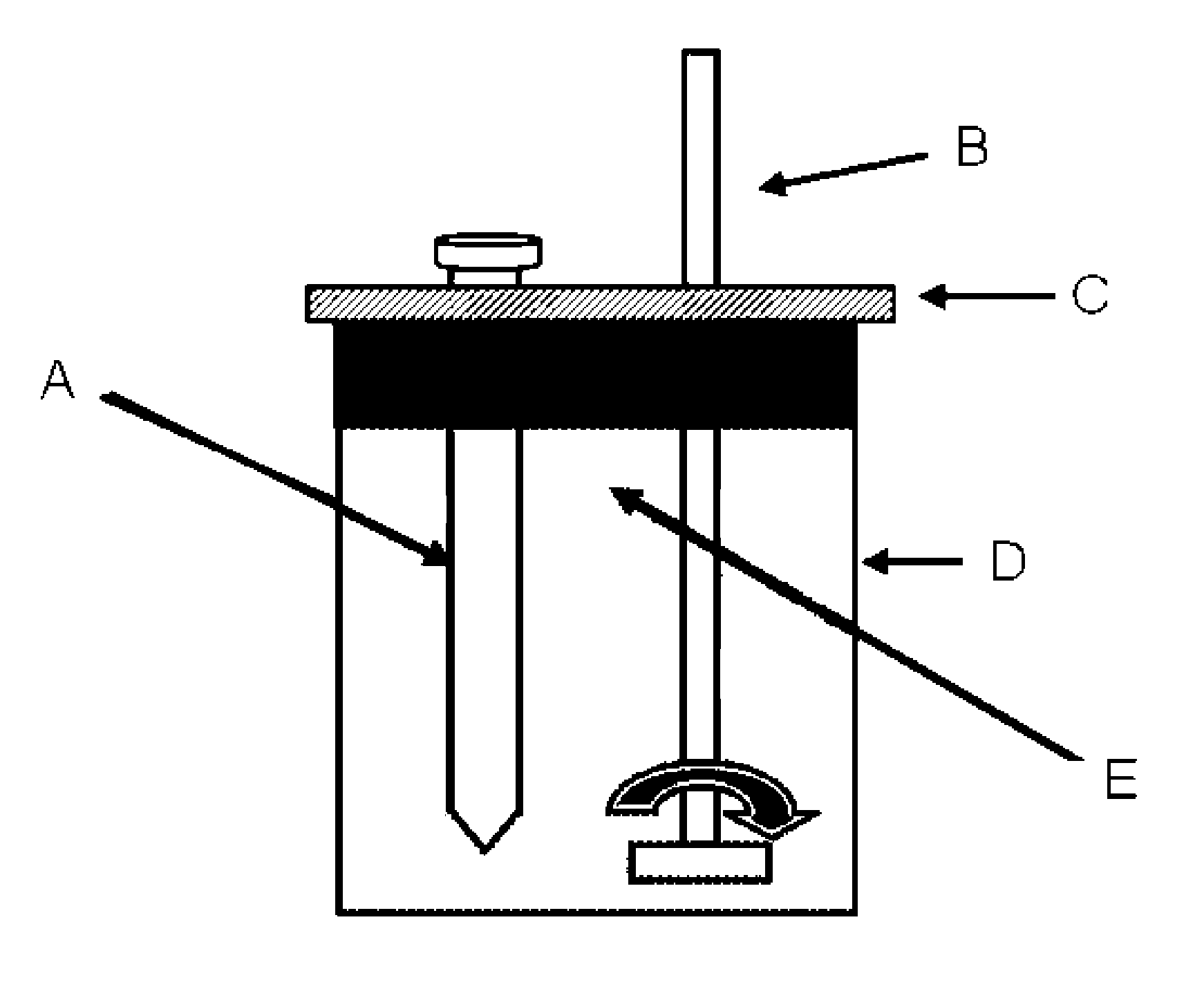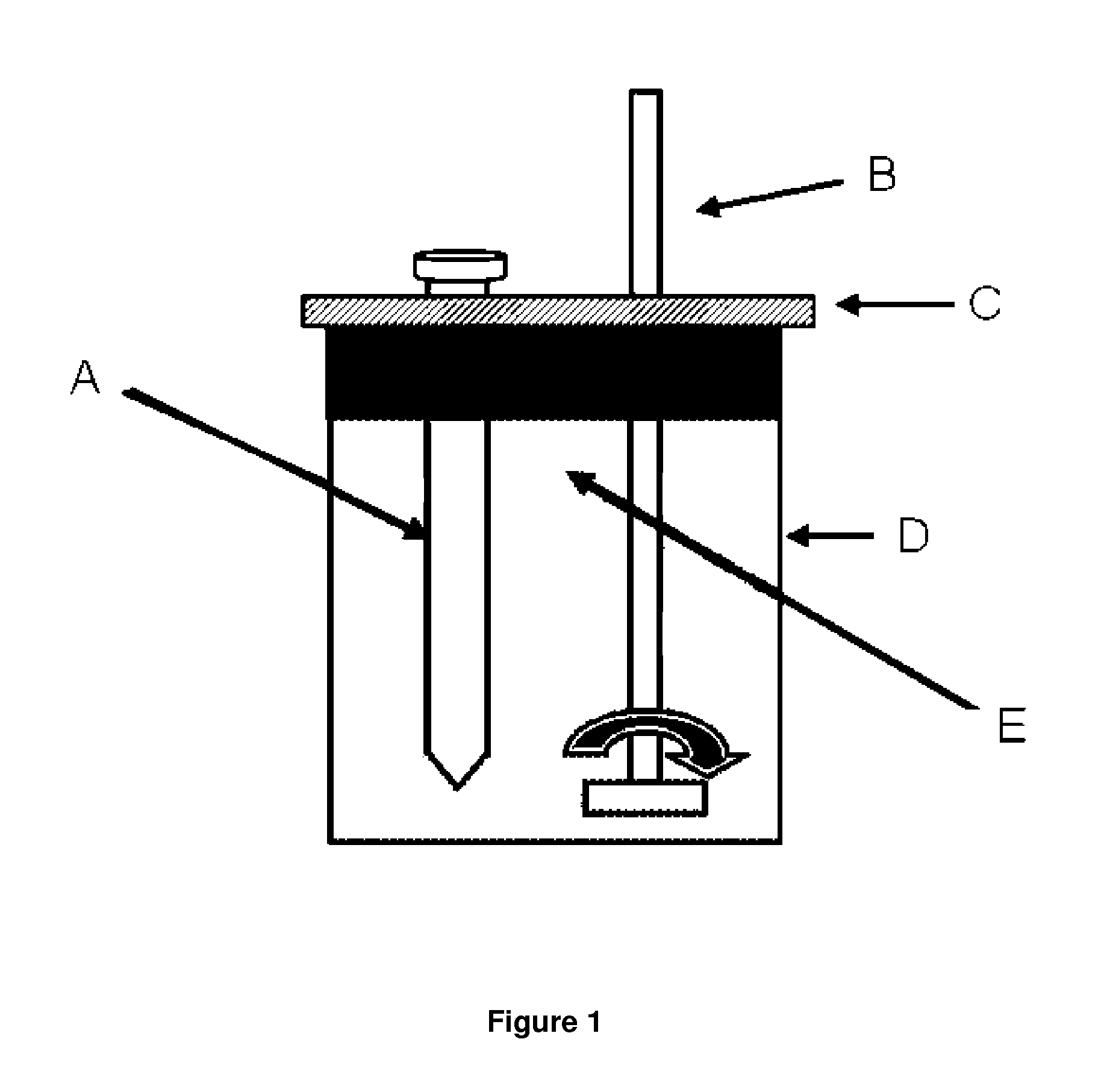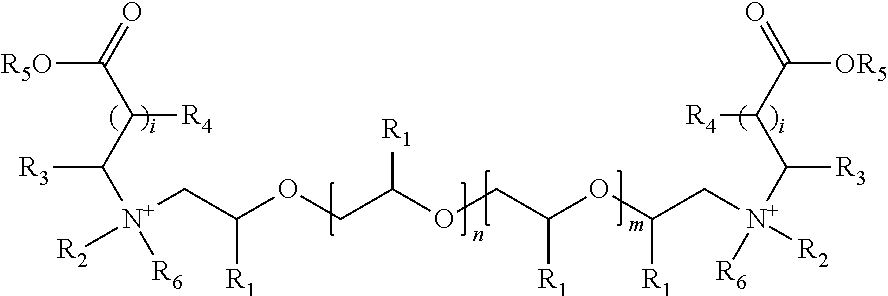Gemini surfactants, process of manufacture and use as multifunctional corrosion inhibitors
a technology of surfactants and corrosion inhibitors, applied in the direction of detergent compositions, fuel additives, liquid carbonaceous fuels, etc., can solve the problems of loss of metallic materials, and loss of millions of daily losses in the oil industry
- Summary
- Abstract
- Description
- Claims
- Application Information
AI Technical Summary
Benefits of technology
Problems solved by technology
Method used
Image
Examples
example 1
Preparation of 4,43-di(octadec-9-enyl)-7,10,13,16,19,22,25,28,31,34,37,40-dodecaoxa-4,43-diazahexatetracontane-1,46-dioic acid. (Product 1)
[0098]In a 500 ml round bottom balloon flask containing 59 g of an aqueous solution to 17 weight percent of sodium hydroxide (10 g) were added 50 g of polyethylene glycol whose number average molecular weight is 600 g / mol, the mixture stirred for 20 minutes. Then, at room temperature (25° C.) and atmospheric pressure (585 mmHg), very slowly 87 g of a solution of tosyl chloride at 40 weight percent (34.8 g) in tetrahydrofuran were added, keeping the temperature below 25° C. throughout the addition. After completion of addition, the reaction mixture was stirred for about an hour at room temperature and atmospheric pressure. Then the reaction mixture was made and extraction of organic phase and evaporated the solvent at reduced pressure, to obtain 74 g of Product A as a viscous clear yellow liquid with a yield of 98%.
[0099]As a second stage of react...
example 2
Preparation of 4,31-di(octadec-9-enyl)-7,10,13,16,19,22,25,28-octaoxa-4,31-diazatetratriacontane-1,34-dioic acid. (Product 2)
[0105]The Product 2 was obtained under the same scheme of synthesis of Product 1. For this product is used a polyethylene glycol with an average molecular weight of 400 g / mol.
[0106]The spectroscopic characteristics of Product 2 are:
[0107]Representative bands of FTIR (cm−1, film): 3445, 3003, 2922, 2853, 1722, 1586, 1464, 1350, 1295, 1248, 1105, 947, 847.
[0108]Representative chemical shifts of NMR 1H (CDCl3), 200 MHz, δ (ppm): 5.26, 3.56, 3.01, 2.98, 2.78, 2.50, 2.47, 1.94, 1.18, 0.80.
[0109]Representative chemical shifts of NMR 13C (CDCl3), 50 MHz, δ (ppm): 175.1, 129.8, 129.5, 72.6, 70.3, 53.0, 51.7, 50.3, 50.0, 32.4, 31.7, 29.5, 29.3, 29.1, 27.0, 22.5 y 13.9.
example 3
Preparation of 4,16-di(octadec-9-enyl)-7,10,13-trioxa-4,16-diazanonadecane-1,19-dioic acid. (Product 3)
[0110]The Product 3 was obtained under the same scheme of synthesis of Product 1. For this product is used a polyethylene glycol with an average molecular weight of 200 g / mol.
[0111]The spectroscopic characteristics of Product 3 are:
[0112]Representative bands of FTIR (cm−1, film): 3442, 3004, 2922, 2852, 1718, 1575, 1464, 1351, 1291, 1217, 1119, 965, 833.
[0113]Representative chemical shifts of NMR 1H (CDCl3), 200 MHz, δ (ppm): 5.30, 3.60, 3.14, 2.99, 2.85, 2.55, 2.51, 1.96, 1.23, 0.84.
[0114]Representative chemical shifts of NMR 13C (CDCl3), 50 MHz, δ (ppm): 175.0, 129.9, 129.6, 70.6, 53.2, 51.8, 50.2, 50.0, 32.5, 31.8, 29.6, 29.4, 29.2, 27.1, 22.6 and 14.0.
PUM
| Property | Measurement | Unit |
|---|---|---|
| temperature | aaaaa | aaaaa |
| temperature | aaaaa | aaaaa |
| pressure | aaaaa | aaaaa |
Abstract
Description
Claims
Application Information
 Login to View More
Login to View More - R&D
- Intellectual Property
- Life Sciences
- Materials
- Tech Scout
- Unparalleled Data Quality
- Higher Quality Content
- 60% Fewer Hallucinations
Browse by: Latest US Patents, China's latest patents, Technical Efficacy Thesaurus, Application Domain, Technology Topic, Popular Technical Reports.
© 2025 PatSnap. All rights reserved.Legal|Privacy policy|Modern Slavery Act Transparency Statement|Sitemap|About US| Contact US: help@patsnap.com



